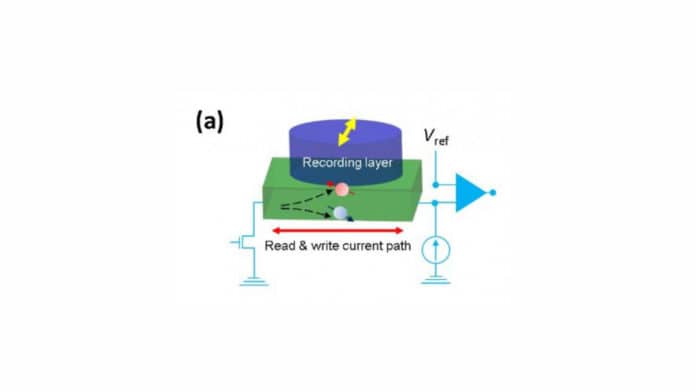Spintronics is a new technological field where the “spin” or the angular momentum of electrons plays an essential job in the functioning of electronic devices. Collective spin arrangements are the reason behind the analytical properties of attractive materials, which are prevalently utilized in modern electronics.
Specialists comprehensively have been attempting to control spin-related properties in specific materials, attributable to a myriad of applications in devices that work on this phenomenon, particularly in non-volatile memories. These magnetic non-volatile memories called MRAM can beat current semiconductor memories in terms of power utilization and speed.
Scientists from the Tokyo Institute of Technology (Tokyo Tech) explored a new material combination that sets the stage for magnetic random access memories, which rely on spin–an intrinsic property of electrons– and could outperform current storage devices. In the study, scientists described unidirectional spin Hall magnetoresistance (USMR), a spin-related phenomenon that could be used to develop MRAM cells with a straightforward structure.
The spin Hall effect prompts the accumulation of electrons with a certain spin on the lateral sides of a material. The inspiration driving this study was that the spin Hall effect, which is especially strong in materials known as “topological insulators’, that can bring about a giant USMR by combining a topological insulator with a ferromagnetic semiconductor.
When electrons with the same spin accumulate on the interface between the two materials, because of the Spin Hall Effect, the spins can be injected into the ferromagnetic layer and flip its magnetization. This allows memory write operations, which means the data in storage devices can be re-written. Along with this, the resistance of the composite structure changes with the direction of the magnetization owing to the USMR effect. As the resistance can be quantified using an external circuit, it enables ‘memory read operations’- means data can be re-read.
In existing material combination using conventional heavy metals for the spin Hall effect, however, the changes in resistance caused by the USMR effect are extremely low–well below 1%–which hinders the development of MRAMs utilizing this effect. Also, the mechanism of the USMR effect seems to vary according to the combination of material used, and it is not clear which mechanism can be exploited for enhancing the USMR to over 1%.
Scientists designed a composite structure that involves a layer of gallium manganese arsenide and bismuth antimonide, to understand better how material combinations can influence the USMR effect. With this combination, they were successful in obtaining a giant USMR ratio of 1.1%.
The results showed that utilizing phenomena called “magnon scattering” and “spin-disorder scattering” in ferromagnetic semiconductors can lead to a giant USMR ratio, making it possible to use this phenomenon in real-world applications.
Assoc. Prof. Pham Nam Hai said, “Our study is the first to demonstrate that it is possible to obtain a USMR ratio larger than 1%. This is several orders of magnitude higher than those using heavy metals for USMR. Also, our results provide a new strategy to maximize the USMR ratio for practical device applications.”
“This study could play a key role in the development of spintronics. Conventional MRAM structure requires about 30 ultrathin layers, which is very challenging to make. By utilizing USMR for read-out operation, only two layers are needed for the memory cells.”
“Further material engineering may further improve the USMR ratio, which is essential for USMR-based MRAMs with a straightforward structure and fast reading. Our demonstration of a USMR ratio of over 1% is an important step toward this goal.”
